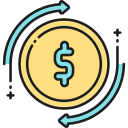Table of Contents
Refinancing a home can be a wonderful way to improve your financial situation, lower your payments, or receive the necessary funds for a large investment.
However, there are a few things you need to know before you commit to refinancing your home.
There’s a lot more to refinancing a home than simply lowering your payment, getting cash out, or getting a lower mortgage rate. Keep reading for an in-depth look at everything you need to know when refinancing.
1. There Are Multiple Reasons to Refinance
There are many reasons why you might want to refinance your mortgage. Most reasons center around improving your financial situation in one way or another.
Here are the most common reasons people choose to refinance.
Reduce Interest
You may be able to refinance your loan with a lower interest rate. This is a great way for homeowners to save a substantial amount of money throughout the length of the loan.
For example, a $250,000 home with an interest rate of 4.0 over the course of 30 years will actually cost you $429,673.77. That’s roughly $180,000 paid on interest alone – which is roughly the price of a second home.
A home at $250,000 at a lower interest rate to 3.25, however, would only cost a total of $391,685.69. That’s a savings of nearly $38,000.
Mortgage rates change based on a variety of market and economic conditions. Also, rates depend on a variety of factors including the loan to value, credit, cash out, and the type of mortgage product. Find out what you qualify for.
Reduce Monthly Payments
One of the best things about refinancing your home is that you can use it to lower your monthly mortgage payments.
This is, of course, assuming you don’t use the refinance to take out cash against the equity. However, if you refinance the loan based on what you owe and receive a lower interest rate and payment, it could save you hundreds of dollars each month.
Reduce the Length of the Loan
If your financial situation has improved and you can afford higher mortgage payments each month, you could refinance to reduce the length of the loan.
While you may wonder why you would want higher monthly payments, think of it in terms of the total cost of a 15-year loan versus a 30-year loan.
Using the same example as above, a $250,000 home at 4.0 percent interest over 30 years would cost $429,673.77 when all is said and done.
That same home at 4.0 percent interest over a 15-year loan would only cost $332,859.57. You would be saving nearly $100,000 in interest by opting for a 15-year loan.
For reference, a 30-year loan would require monthly payments of $1,193.54, while a 15-year loan would require monthly payments of $1,849.22.
Consolidate Debt
If you meet the refinance requirements and have a decent amount of equity in your home, refinancing may be a brilliant way to consolidate high-interest debt into your low-interest mortgage.
For example, the average American has over $5,000 in credit card debt at a typical interest rate of 19 percent.
Other loans and debts have equally high-interest rates. If you could refinance your home and use the positive equity to absorb those debts under a lower interest rate, it could save you thousands of dollars.
Additionally, using a refinance to consolidate your other debts will likely lower your total monthly payments.
Take out Cash Equity
While it’s not always recommended, some people refinance their home to take cash equity out of their home’s total value.
This can be done to make larger investments such as second homes, businesses, or remodeling.
Receive a Home Equity Line of Credit
Some homeowners refinance their homes to take out a HELOC or home equity line of credit. These are typically used to upgrade or renovate the home in some way. This includes bigger projects such as updating an entire kitchen or bathroom, creating more outdoor living space features, adding rooms onto the house, and more.
This can be looked at as a good investment, as these updates and renovations also serve to further increase the value of the home.
Revert From an ARM to an FRM
Finally, you can use a refinance to change your adjustable-rate mortgage to a fixed-rate mortgage. This can be a wise move for homeowners who are planning on staying in the home long-term and want to lock in a low-interest rate.
What can we help you with today?
2. You Need to Do Some Homework
Before you refinance your home, you need to make sure you know what you’re getting into and whether or not it’s even an option. Here are a few bits of homework you need to accomplish before you get too far ahead of yourself.
Know Your Financial Situation
Do you have a high enough credit score to get approved for a home refinance? If your goal is to change from a 30-year loan to a 15-year loan, are you sure you can afford the higher payments?
Know the Market
Is now the right time to refinance? The real estate industry fluctuates like any other based on the economy. What are the average interest rates lenders are offering to borrowers?
Before refinancing, make sure the economy is leaning in your favor to get the lowest interest rates possible.
Know Your Home’s Value
You may be asking yourself “How much equity do I need to refinance?” An accepted rule is that you should have at least 20 percent positive equity. However, that’s not to say you can’t refinance with less.
Ultimately it comes down to your particular circumstances (credit score, home value, the purpose for refinancing, etc.).
3. Credit and Income Requirements
When it comes to refinancing requirements, your credit history is one of the most important. But what is the minimum credit score required to refinance?
While there are some lenders that will let you get away with less, generally you need a credit score of 640 or higher to refinance a home with a traditional refinance. However, a lot of your applicability depends on your circumstances such as LTV (Loan to Value) DTI (Debt to Income), and Credit.
For example, if you’re applying for a loan with a spouse or other co-signer, you may have better odds. Additionally, the value of your home and what you’re looking to get out of the positive equity can affect the process.
4. Understand the Cost vs Benefit
It’s important to look at the big picture when refinancing a home. Refinancing is far from free. You need to understand that refinancing your home is essentially taking out a new loan, which includes the same fees.
For example, expect to pay a few thousand dollars at the end of the process for:
- The new appraisal and inspection of your home
- Application/fees
- Document preparation fees
- Recording fees
- Loan origination fees
- Title search and title insurance fees
- And more
However, these costs are often built into the refinance so they will be paid through your mortgage, rather than facing any true “upfront” costs.
All of the costs will be clearly explained in the Loan Estimate. We always caution customers against quotes over the phone or verbally. The loan estimate is designed to clearly allow you to see all of the closing costs, the APR (Annual Percentage Rate), and the exact terms of the loan.
5. Does Refinancing Reset the Length of the Loan
In most cases, refinancing does replace your current loan with a new loan.
However, there are products for a variety of mortgage terms and not just your standard 15 year fixed rate mortgage or 30 year fixed-rate mortgage.
If you have been paying for 7 years why start over at a 30 year fixed-rate mortgage.
That is why many lenders have created fixed-rate mortgage products for any term length.
6. Understanding Discount Points vs Lender Credits
Mortgage points also known as discount points are fees that are paid to the lender for a reduced rate. This is often called buying down the rate or a rate buy-down.
Lender credits can go toward closing costs such as title and escrow but usually will come with a higher interest rate.
You may need to run some numbers to determine if the amount you’re saving on interest is worth the upfront cost of mortgage points.
We always recommend talking with a mortgage professional as several factors come into play depending on your specific goals.
7. You Don’t Have to Refinance Through the Same Mortgage Company
Finally, one of the best things about the refinance requirements is that they don’t include using the same mortgage company as your original loan.
That means you can shop around with multiple lenders to get the best rates possible.
You may even be able to get approved through one lender when another has turned you down.
Be careful not to apply for too many loans, which can hurt your credit. The pre-approval process, however, does not affect your credit score.
Additionally, keep in mind that you can use one lender’s offer to negotiate with others to talk them down on prices, interest rates, and more.
Be sure to get a Loan Estimate when considering refinancing. Anyone can provide a quote on the phone, but the loan estimate or LE was designed to allow you to compare mortgage terms and clearly see the term, interest rate, APR (Annual Percentage Rate), and closing cost.
Do You Meet All of the Refinance Requirements?
If you and your home meet the refinance requirements, you’ve come to the right place.
Choice Home Mortgage exists to help people like you refinance their homes to pull out cash equity, pay off debt, consolidate debt, lower their interest rates, and more.
Apply now to see what you qualify for or call us with any questions or concerns.




